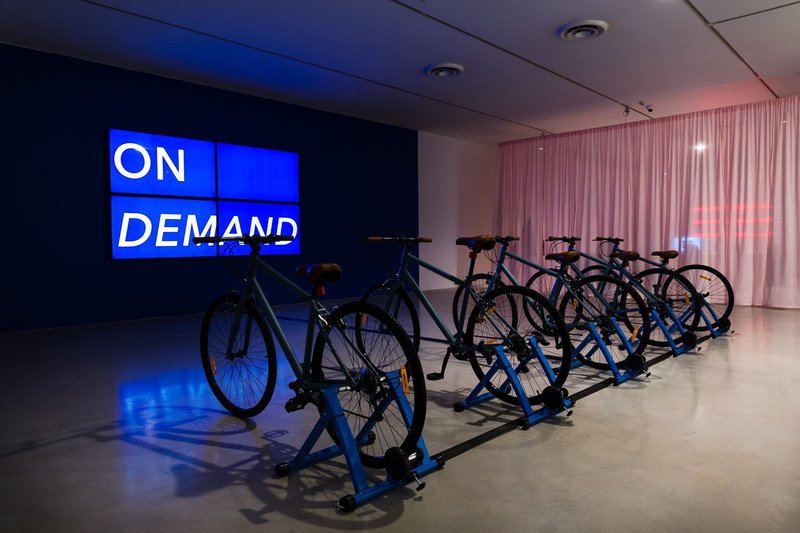New questions for new times
Image: Eugenia Lim, ‘ON DEMAND’, 2019. Pedal-powered four-channel video installation. Commissioned by Campbelltown Arts Centre for ‘OK Democracy, we need to talk’. Photo by Document Photography
Image: Eugenia Lim, ‘ON DEMAND’, 2019. Pedal-powered four-channel video installation. Commissioned by Campbelltown Arts Centre for ‘OK Democracy, we need to talk’. Photo by Document Photography

What’s next for the arts in a policy environment that’s light on evidence base, causal sophistication and cultural competency?
It’s the question on the lips of everyone in an arts leadership position right now – as well as the artists who rely on us. Important questions continue to circulate among colleagues – questions that indicate fruitful lines of inquiry for researchers, think tanks, academics and investigative journalists.
Let’s start with the artist. How do we reconcile the visual arts being Australia’s most popular artform in terms of creative participation, with the decline in the number of visual artists and craft practitioners? How will we redress the alarmingly low overall incomes earned by artists? The incomes that professional artists derive exclusively from creative work are below the poverty line and have fallen 19% in seven years. How can we redress the gender pay gap, which is worse in the arts than in any other industry?
If these trends continue, how will we avoid losing culture, talent, jobs, and the local economies they power?
Let’s look nationally. Last year the Bureau of Communications and Arts Research calculated the economic contribution of cultural and creative activity in Australia at $111.7bn according to figures released by late last year. In the previous month’s Arts Agenda, we talked about how this massive figure overlooks the visual arts, craft and design sector and the contemporary arts at large. Omitted are the entire visual arts, craft and design market including the creation, exhibition and sale of contemporary art in public and commercial galleries, the secondary market of sales at auctions or through dealers, and the work of all Aboriginal Art Centres. The economic contribution of Australia’s painters, sculptors, photographers, public artists and so many other contemporary practices has not been considered at all. And yet the visual arts is the artform participated in by more creatives than any other in Australia.
How will we ensure that senior bureaucrats have the data they need ready to hand to support great decisions? How can we guide the Bureau with the most helpful research questions to understand the contemporary arts comprehensively?
How does declining trust in government correlate with declining public funding of our national cultural institutions, as well as the arts more broadly? How does it correlate with political attacks on those institutions on grounds which misunderstand their purpose – such as the criticisms on the Museum of Australian Democracy? How does it correlate with declining investment in public education – in particular, investment in arts education, and its well-understood capacity to nurture independent critical thinking?
And what’s at stake if we don’t respond to these questions?